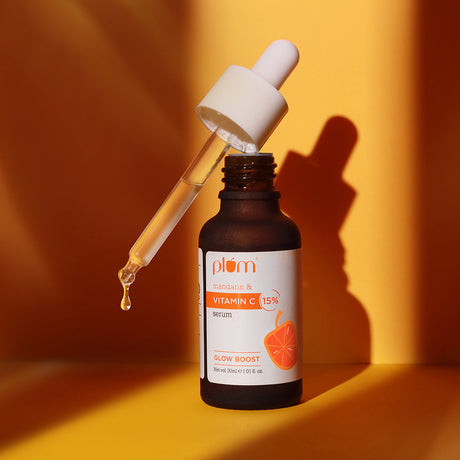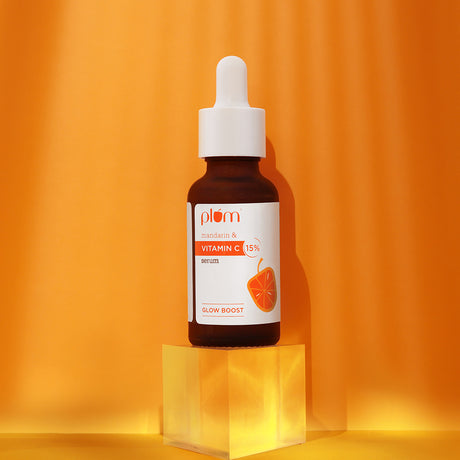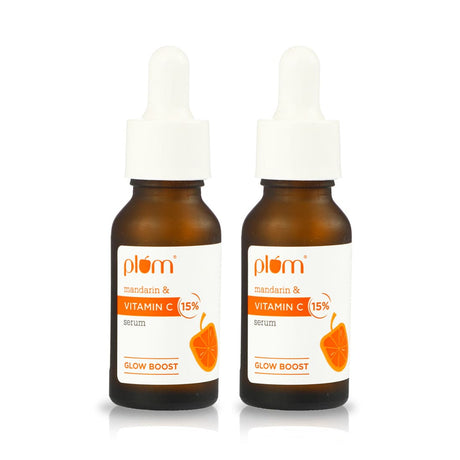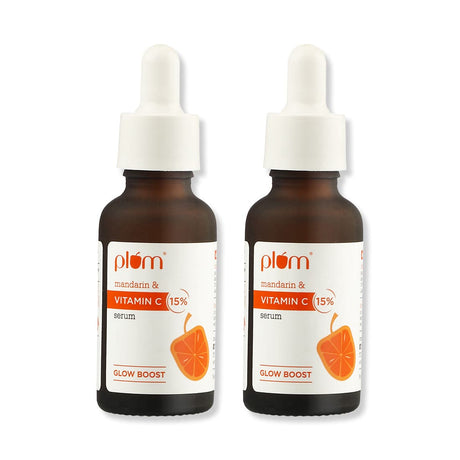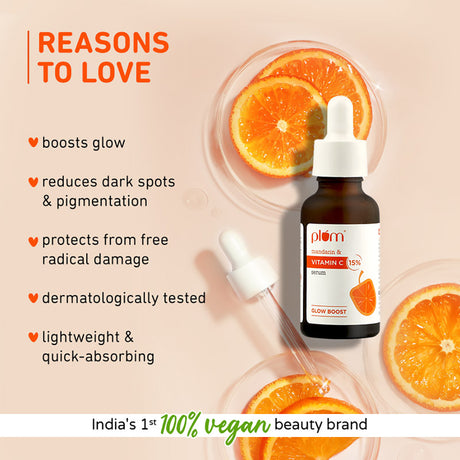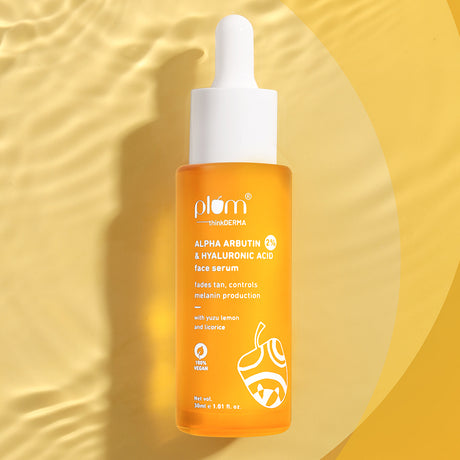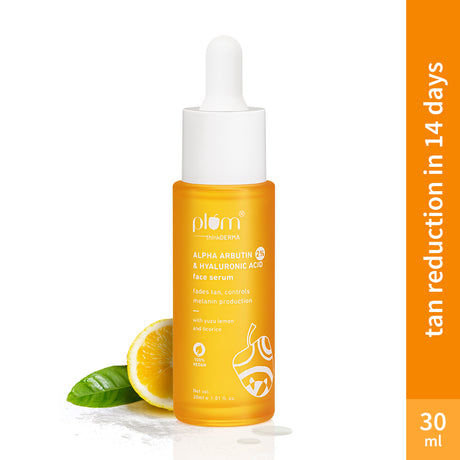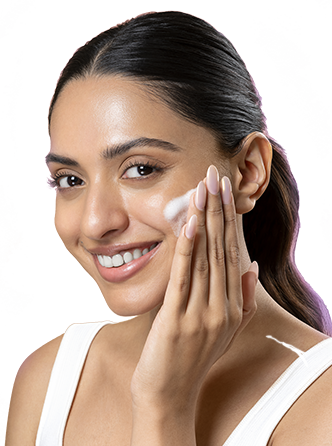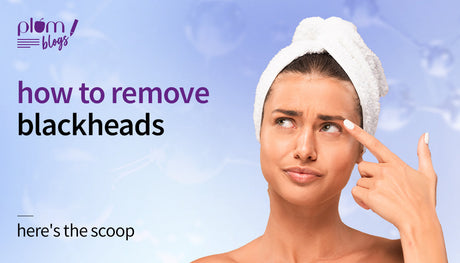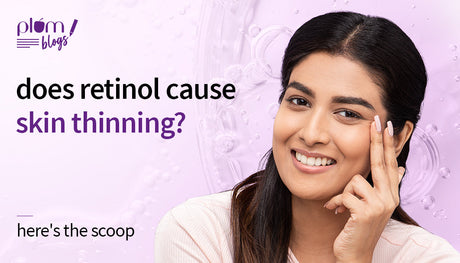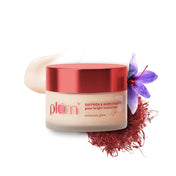
IN THIS ARTICLE
Have you ever noticed those little dark spots showing up on your skin? You know, those tiny spots that stay put on your skin? Well, those are what experts call hyperpigmentation. It's caused when your skin is throwing a little shade – but not the cool kind.
So, what causes these dark spots on face? It all comes down to melanin, the pigment that gives color to your skin. Sometimes, your body produces too much melanin ( due to valid reasons, ofcourse!), leading to these patches that look darker than the rest of your skin.
Hyperpigmentation or dark spots, whatever you call it, is one of the most common skin concerns especially in hotter regions like India. If you're wondering how to remove black spots from the face, there are various treatments and remedies available to help even out your skin tone.
However, while it seems like a stubborn visitor who is not ready to leave, the right skincare regimen and targeted products can help reduce dark spots and give you clear skin.
To help you deal with them, let’s discuss hyperpigmentation in detail. Let’s learn what hyperpigmentation is, its causes, types, and the answer to a frequently asked question “how to reduce dark spots on face, hands, and other parts of the body.
What is hyperpigmentation?
If we break down the word ‘hyperpigmentation’, we would get ‘hyper’ meaning excess, and ‘pigment’ meaning a substance that gives color.
Therefore, hyperpigmentation is a skin condition where your skin produces more pigment than normal, resulting in the appearance of patches on your skin that are darker than the surrounding areas and fail to fade over time.
Sun exposure is one of the most common reasons for hyperpigmentation. When you are exposed to sun rays for a longer duration, the exposed parts of your body like the face, arms, and legs get affected, turning dark with sun spots and patches.
However, it can also be caused by areas with minimal sun exposure, inflammation, genetics, or medical reasons.
Difference between pigmentation, dark spots, hyperpigmentation, and melasma
While there are a few different names for this condition, it's crucial to understand what each means for the right treatment and remedies.
Pigmentation
Even though you might have searched for queries like "how to get rid of pigmentation, why pigmentation comes on the face, causes of pigmentation, etc., you need to know that pigmentation is not a skin concern.
Skin pigmentation is a colloquial term for hyperpigmentation and dark spots. What you need to be concerned about is uneven skin pigmentation.
Pigmentation is just a natural phenomenon that determines the color of your skin, hair, and eyes, depending on the amount of melanin your body produces.
Dark spots
Dark spots and hyperpigmentation mean the same thing i.e., discoloration and darkening of the skin.
Melasma
Melasma and hyperpigmentation are often considered the same. However, they differ in many aspects like appearance, causes, treatment, etc.
Hyperpigmentation is an umbrella term that refers to the darkening of the skin in a few focused areas in the form of dark spots, freckles, sun spots, age spots, or dark patches.
However, melasma is a type of hyperpigmentation that occurs in the form of blotchy patches covering a larger area.
While hyperpigmentation is caused by sun damage, acne scarring, or inflammation, melasma is largely attributed to hormonal changes and medications, along with other reasons like longer sun exposure and genetics.
Causes of hyperpigmentation
It might be difficult to find an answer to how to remove the dark spots on the face unless you find its reasons and causes.
Here are the major causes of hyperpigmentation, you need to watch out for.

1. Sun exposure
One of the primary reasons for hyperpigmentation is overexposure to the sun'rays. When our skin is exposed to sunlight for a longer duration, it produces melanin as a defense mechanism. While the production of melanin is a natural process, overexposure to the sun can lead to its uneven distribution, causing those dark spots on face.
2. Post skin injuries -inflammatory hyperpigmentation
When you have skin injury, burns, blemishes, or even acne, your skin gets inflamed. During the process of healing, the skin often produces more melanin, causing dark spots and discoloration.
Another reason you must never pick on your acne as it worsens the inflammation, aiding skin darkening and scaring.
Similarly, the usage of harsh chemicals on the skin or the wrong products that irritate your skin can trigger increased melanin production. So if you wish to prevent dark spots on face, always do a patch test before trying a new product!
3. Hormonal changes
Unknown to many, hormonal changes in your body can significantly impact your skin, causing hyperpigmentation, and melasma. Factors such as pregnancy, birth control pills, menopause, and other hormonal fluctuations often trigger an increase in melanin production, causing dark spots, especially around your mouth, on your forehead and cheeks.
4. Age and genetics
Your genetics are also a common reason for hyperpigmentation. If your parents or grandparents have had dark spots or melasma on their skin, you are more susceptible to getting them too. Though it's not impossible to treat hyperpigmentation caused by genetics, it could surely be challenging.
Similarly, your age could also be a reason you are getting more dark spots than ever. With age, the renewal process of your skin slows down, leading to the accumulation of adverse effects of sun exposure, inflammation, etc., contributing to stubborn dark spots on face.
5. Health conditions and medications
Doctors believe that certain medications can trigger melanin production and cause dark spots. Similarly, certain medical conditions like Addison's disease have also been attributed to darkening your skin.
7 tips on how to reduce dark spots on the face
1. Opt for active ingredients- vitamin C, alpha arbutin
For faster and effective results, you must look for remedies that are backed by dermatologists and have been formulated to remove dark spots on your face. Vitamin C is one such active ingredient that works best on your skin to reduce hyperpigmentation, while nourishing the skin.
Vitamin C, also called ascorbic acid, is known to lighten your skin and reduce hyperpigmentation while enhancing your natural glow.
Vitamin C boosts the production of collagen, aiding in skin renewal. It also evens out your skin tone and reduces the sun spots, giving clear skin. For optimal and speedy results on how to quickly remove dark spots from the face, use a high-quality vitamin C serum.
However, as serums are concentrated, its crucial to use it in the right way. For instance, you must use only a few drops of serums on your skin and always follow up with a sunscreen in the morning.
Ensure to read about its correct usage before incorporating it in your daily routine.
2. Try home remedies for hyperpigmentation
If you’re exploring how to remove black spots from the face, certain homemade face masks can help you. Ingredients like curd, lemon, tomato, turmeric, aloe vera, papaya, etc., can be easily used as a face mask and face wash to lighten your spots.
However, before using any natural ingredients, ensure that it is suitable for your skin.
Potato and lemon
Potatoes and lemon have natural bleaching properties that help lighten your dark spots and clear the skin. However, avoid using lemon directly on your skin to avoid irritation.
Steps to make a face mask -
- Grind a potato and extract its juice in a bowl.
- Add a few drops of lemon juice and mix it well.
- Apply the mixture to the affected area using a cotton ball.
- Leave it for 15 minutes and wash it off with lukewarm water.
- Alternately, cut one potato into two and rub it on your skin in a circular motion for a few minutes. Wash off and pat dry.
Tomato and curd
Tomato is loaded with vitamin C, and vitamin K that helps lighten the skin, and remove dark spots and tanning. Similarly, curd contains lactic acid, a natural bleaching agent that helps nourish your skin and remove dark spots on face.
Steps for using them as a face mask
- Extract the juice of one small tomato in a bowl.
- Add a few drops of lemon and one tablespoon of curd in the mixture.
- Whip it well and apply a thin paste on the affected area.
- Leave for 15 minutes or until it dries.
- Wash off with lukewarm water and pat dry.
You can use these face wash twice a week for best results. However, be sure to follow up with moisturizer and sunscreen(in your AM routine).
Unfortunately, preparing home remedies can be a tedious job for some. Moreover, you need to prepare fresh batches of the same for every use which, to be honest, does not sound feasible, right?
Therefore, dermatologists suggest using active ingredients which are faster and more effective in reducing hyperpigmentation.
3. Adopt a skincare routine
Effective cleansing along with a targeted skincare routine can help reduce dark spots, and prevent them from reoccuring.
- Follow a basic routine of cleansing, toning, treating, and moisturizing your skin twice daily.
- Always follow up with sunscreen in the morning.
- Opt for brightening serums like vitamin C, alpha arbutin, and niacinamide in your routine. These serums help reduce blemishes and dark spots, where alpha arbutin goes a step further by inhibiting melanin production.
- Add exfoliation to your weekly skincare routine to remove dead skin cells and aid skin renewal.
- You can also opt for chemical peels once every 15 days. However, consult a dermatologist before using a chemical peel, as it can be harsh for your skin if used incorrectly.
4. Make sunscreen your BFF!
Applying sunscreen daily is one of the easiest ways to prevent and reduce dark spots on the face. Sunscreen protects your skin against skin damage and tanning.
Use a broad-spectrum sunscreen of at least SPF 35 and more, regardless of the weather, and reapply every 3-4 hours. You must use an SPF even if you are indoors as you may be exposed to sunlight through window panes.
To further prevent and reduce hyperpigmentation, protect your skin against the harmful effects of UV rays. Avoid stepping out during peak sun hours between 10 a.m. and 4. p.m. and use protective clothing like gloves, scarves, and hats for an added layer of defense.
5. Adopt a healthy diet
It might take longer than expected to see positive results without the right lifestyle changes. There is a close relationship between your diet and your skin health.
To learn how to reduce dark marks on the face, it's important to have a balanced diet, rich in vitamins, minerals, and antioxidants that help promote collagen and skin renewal. Vitamin C-rich fruits like oranges and berries help with collagen synthesis, while leafy greens abundant in iron promote oxygen circulation to the cells.
Additionally, antioxidants found in colorful vegetables protect against free radicals, preventing hyperpigmentation.
6. Keep yourself hydrated
While keeping your skin hydrated helps reduce signs of aging and keeps skin plump and glowing, it can reduce dark spots too.
Drinking adequate water helps flush out toxins, prevents dehydration, and keep your skin healthy, thereby reducing the appearance of dark spots and sun spots.
7. Try surgical treatments
If nothing seems to help remove you facial dark spots, you can consult a dermatologist to get chemical treatments. Treatments like chemical peels, laser treatments, microdermabrasion, cryotherapy, etc., can help reduce hyperpigmentation. These are done in specialized clinics, under medical supervision by removing the outer layer of your skin.
However, such treatments can be expensive and take a longer time to heal and recover.
Takeaway
Hyperpigmentation is a common skin condition that can happen at any age or to any skin type. However, understanding its causes and the right treatment plan for your skin can help reduce and remove them gradually.
To effectively learn how to reduce dark spots on the face, it's crucial to be consistent in your efforts and maintain a balanced lifestyle.
So, start your journey toward healthy skin and get clear, glowing skin today.
FAQ
1. What removes dark spots on the face?
Many active ingredients can help fade dark spots and reduce hyperpigmentation from your face. You can use vitamin C to reduce the appearance of dark spots and boost collagen production. Similarly, alpha arbutin and niacinamide can help you reduce tan and brighten your skin naturally.
2. Does potato remove dark spots?
Yes, potatoes are natural bleaching agents that can reduce and fade off hyperpigmentation from your skin. You can use them directly on the face or in a face mask for best results.
3. How to remove pigmentation from the face permanently?
Removing pigmentation from your face can take a few weeks to months, depending on the intensity. However, if you wish to remove it permanently and quickly, you can opt for medical treatments. Professional treatments like laser therapy, chemical peels, and microdermabrasion can provide more immediate results.



